2009 Toyota Tundra Service, Tires & Repairs
Get Started
Complete Auto Care for Your 2009 Toyota Tundra
-
TIRES FOR YOUR 2009 Toyota Tundra View Tire Info GET TIRE PRICING
-
REPAIR FOR YOUR 2009 Toyota Tundra View Repair Info SCHEDULE REPAIR
-
MAINTENANCE FOR YOUR 2009 Toyota Tundra View Maintenance Info SCHEDULE MAINTENANCE
-
OFFERS FOR YOUR 2009 Toyota Tundra Limited Time Tire Offers VIEW ALL COUPONS
2009 Toyota Tundra Tires
Recommended Tires | Tire Information
2009 Toyota Tundra Tires Sizes, Speed Ratings, and Inflation
Not sure about your 2009 Toyota Tundra tire size? Use the following chart to find information on tire size, speed rating, and inflation.
| Trim Level | Speed Rating | Inflation in PSI F/R | Tire Size |
|---|---|---|---|
| 2009 Toyota Tundra Base* | R | 50 PSI/50 PSI | LT285/70R17/D |
| 2009 Toyota Tundra Base* | T | 30 PSI/33 PSI | P255/70R18 |
| 2009 Toyota Tundra Base* | T | 30 PSI/33 PSI | P275/65R18 |
| 2009 Toyota Tundra Base* | H | 30 PSI/30 PSI | P275/55R20 |
| 2009 Toyota Tundra Limited* | H | 30 PSI/33 PSI | P275/55R20 |
| 2009 Toyota Tundra Limited* | T | 30 PSI/33 PSI | P275/65R18 |
| 2009 Toyota Tundra SR5* | H | 30 PSI/33 PSI | P275/55R20 |
| 2009 Toyota Tundra SR5* | T | 30 PSI/33 PSI | P255/70R18 |
| 2009 Toyota Tundra SR5* | T | 30 PSI/33 PSI | P275/65R18 |
|
2009 Toyota Tundra Base* Speed Rating: R Inflation F/R: 50 PSI/50 PSI |
|
2009 Toyota Tundra Base* Speed Rating: T Inflation F/R: 30 PSI/33 PSI |
|
2009 Toyota Tundra Base* Speed Rating: T Inflation F/R: 30 PSI/33 PSI |
|
2009 Toyota Tundra Base* Speed Rating: H Inflation F/R: 30 PSI/30 PSI |
|
2009 Toyota Tundra Limited* Speed Rating: H Inflation F/R: 30 PSI/33 PSI |
|
2009 Toyota Tundra Limited* Speed Rating: T Inflation F/R: 30 PSI/33 PSI |
|
2009 Toyota Tundra SR5* Speed Rating: H Inflation F/R: 30 PSI/33 PSI |
|
2009 Toyota Tundra SR5* Speed Rating: T Inflation F/R: 30 PSI/33 PSI |
|
2009 Toyota Tundra SR5* Speed Rating: T Inflation F/R: 30 PSI/33 PSI |
* Note: these models have different tire sizes depending on vehicle options.
Recommended Tires for Your 2009 Toyota Tundra
What tires are best for a 2009 Toyota Tundra? Check out the following tire brands and types.
 ALENZA AS ULTRA
ALENZA AS ULTRA
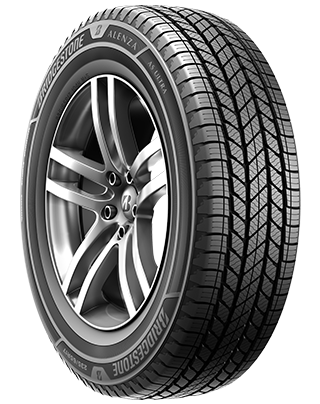
- No warranty
- All-Season
- Light Truck Tires
 Blizzak DM-V2
Blizzak DM-V2
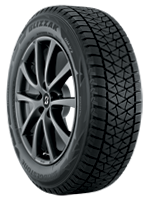
- No warranty
- Winter
- Winter
 DriveGuard Plus
DriveGuard Plus
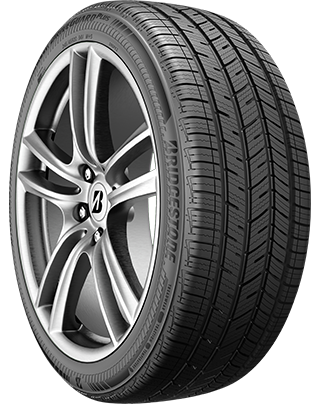
- Platinum Pact Limited Warranty
- All-Season
- Performance
 Dueler H/L Alenza
Dueler H/L Alenza
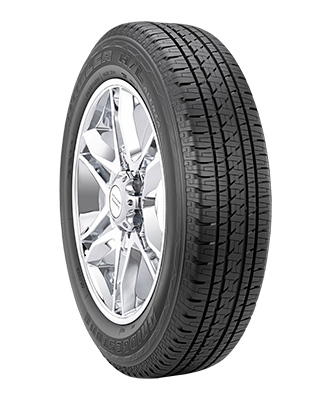
- Platinum Pact Limited Warranty
- All-Season
- Light Truck Tires
 Dueler H/L Alenza Plus
Dueler H/L Alenza Plus
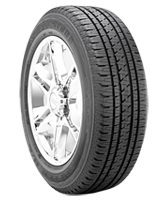
- Platinum Pact Limited Warranty
- All-Season
- Light Truck Tires
 Dueler A/T Revo 3
Dueler A/T Revo 3
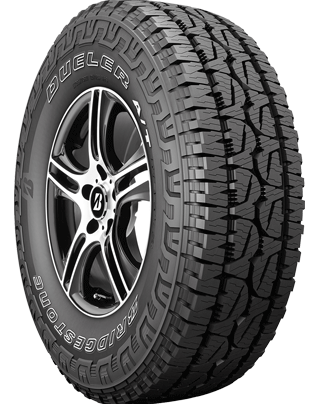
- Platinum Pact Limited Warranty
- All-Season
- Light Truck Tires
 Dueler A/T RH-S
Dueler A/T RH-S
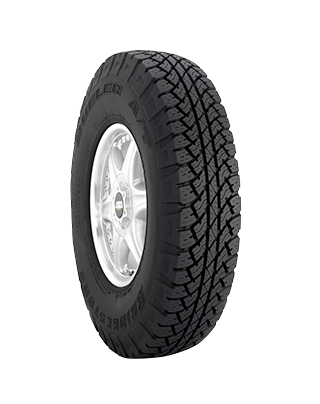
- Platinum Pact Limited Warranty
- All-Season
- Light Truck Tires
 Dueler H/T 684 II
Dueler H/T 684 II
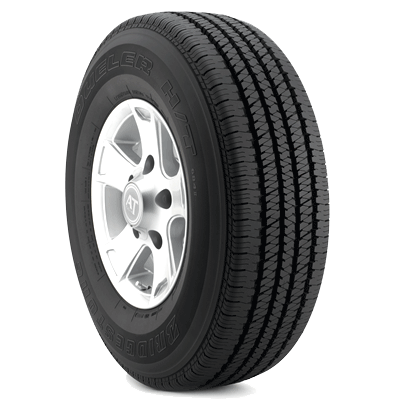
- Platinum Pact Limited Warranty
- All-Season
- Light Truck Tires
 Dueler H/T 685
Dueler H/T 685
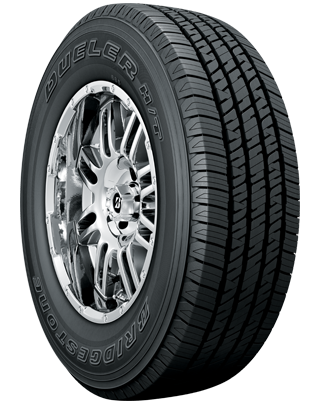
- No warranty
- All-Season
- Light Truck Tires
 WEATHERPEAK
WEATHERPEAK
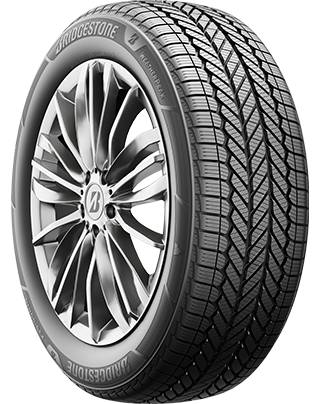
- Platinum Pact Limited Warranty
- All-Season
- Passenger Tires
 Dueler A/T Revo 3 - LT
Dueler A/T Revo 3 - LT
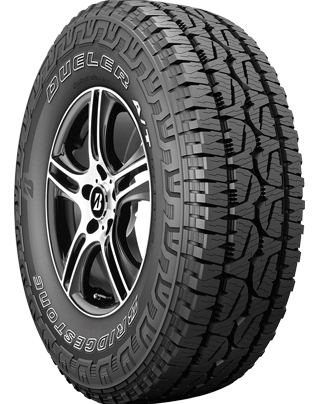
- Platinum Pact Limited Warranty
- All-Season
- Light Truck Tires
 Destination LE3
Destination LE3
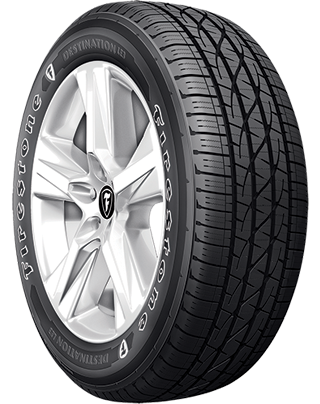
- No warranty
- All-Season
- Light Truck Tires
 Destination A/T2
Destination A/T2
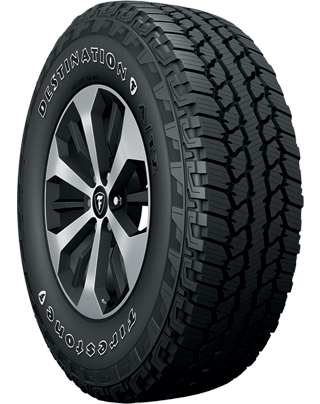
- Gold Pledge Limited Warranty
- All-Season
- Light Truck Tires
 Destination X/T
Destination X/T
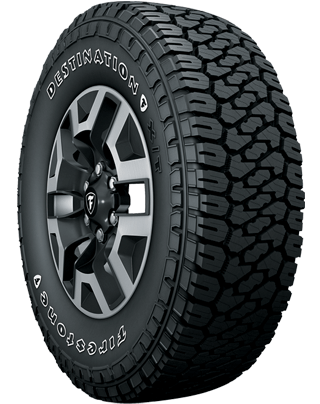
- Gold Pledge Limited Warranty
- All-Season
- Light Truck Tires
 Transforce AT2
Transforce AT2
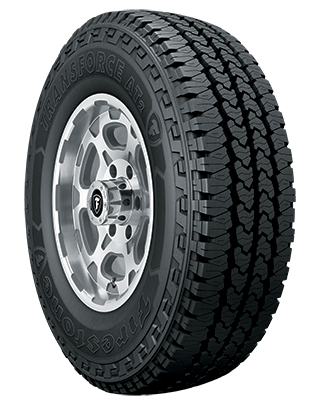
- No warranty
- All-Season
- Light Truck Tires
 Transforce HT2
Transforce HT2
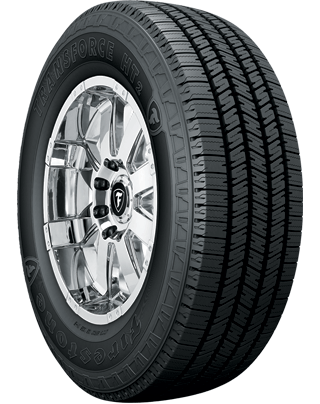
- Gold Pledge Limited Warranty
- All-Season
- Light Truck Tires
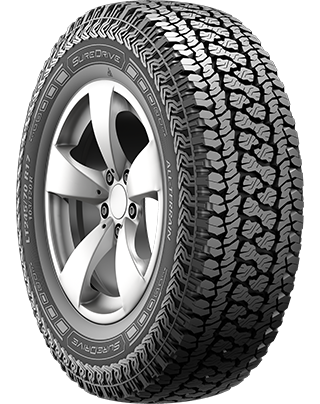
- No warranty
- All-Season
- Light Truck Tires
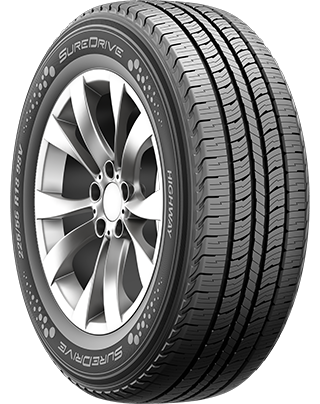
- No warranty
- All-Season
- Light Truck Tires
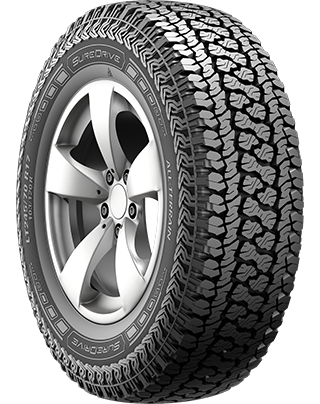
- No warranty
- All-Season
- Light Truck Tires
 PROXES ST III
PROXES ST III
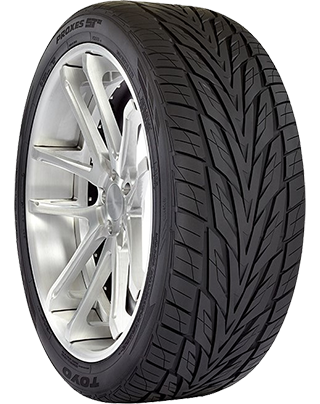
- No warranty
- All-Season
- Light Truck Tires
 OPEN COUNTRY R/T
OPEN COUNTRY R/T
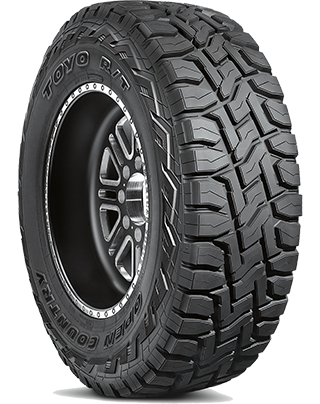
- No warranty
- All-Season
- Light Truck Tires
2009 Toyota Tundra Tire Information
Other than getting the proper tire size, you also want to think about a couple of other things when getting new Toyota Tundra tires like how and where you drive, and how much you want to spend. When thinking about your driving conditions, consider where you live (mountains vs. city vs. countryside) and the kind of weather can catch you off-guard. (Watch out Tornado Alley!) Many drivers who live in states that experience all four seasons choose to purchase two sets of tires: one set for winter, one set for summer. Other drivers buy one set of all-season tires instead. That way they don't have to return to the tire shop and their vehicle is always ready for sun, rain, and light snow!
Driving style is next on the list to think about when buying tires. If you're a diehard off-roader, you have very different tire needs than a highway commuter who doesn't leave the paved path. Browse Toyota Tundra tires online or come to your nearby Firestone Complete Auto Care for help selecting the tire that's right for you.
2009 Toyota Tundra Tire Installation & Rotation
Firestone Complete Auto Care has been a leading tire provider for more than a century. We're your tire shop and a complete service center for tire installation, maintenance, repair, rotation, and alignment! We make it easy to buy new 2009 Toyota Tundra tires online and book an installation appointment at the same time.
2009 Toyota Tundra Tire Q&A
-
Why check Toyota tire inflation? The right tire pressure can make all the difference. Proper tire inflation helps increase fuel economy, improve braking time, and boost tire lifespan! Even a small change in tire pressure can impact your driving.
-
What do the tire sidewall numbers mean for my Toyota Tundra? Your tire sidewall gives you information about load carrying capacity, speed rating, treadwear, traction, and tire size. Talk to one of our tire technicians to learn how to read the numbers on your tire!
-
Can I check the tread depth on my Toyota tires at home? Stay on top of your tire tread depth to help avoid a dangerous drive. You can check tread depth with a penny. Hold the penny so that Abraham Lincoln is facing you, then place your penny into a tread groove upside down. If you can see the top of Abe’s head, your tread is shallow and it might be time for new Toyota Tundra tires. Grab a penny. Hold the so that Abe Lincon's head is facing you and his hair is pointing toward the ground. Then, place the penny into a tread groove. If you can see the top of Abe’s head, your tread is shallow and it might be time for new Toyota Tundra tires.
Types of 2009 Toyota Tundra Repairs
When to repair, when to replace? Click on a repair below to learn more about Toyota Tundra repairs at Firestone Complete Auto Care.
Get Repairs for Your 2009 Toyota Tundra
For most drivers, the words “car repair” don’t exactly spark excitement. But we work to provide you with a different experience at Firestone Complete Auto Care. Bring your 2009 Toyota Tundra in for repair services and our technicians will take care of your Tundra like it was their own. We'll work to evaluate the scope of repairs needed and explain your options. If a repair isn't necessary, we won't recommend it.
What Will Toyota Tundra Repairs Cost?
Several factors can affect the cost to repair your 2009 Toyota Tundra, including the type of repair, prices of appropriate replacement parts, how much labor the repair will take, and your locale. But no matter your location, you may be able to save money with one of our many auto repair coupons or offers.
A few different aspects can influence repair costs for your 2009 Toyota Tundra, like
2009 Toyota Tundra Auto Repair Questions
-
Do I still need scheduled maintenance even when nothing is wrong with my Toyota? The cheapest 2009 Toyota Tundra repair is the one that isn’t necessary in the first place! Staying up-to-date with your car’s scheduled maintenance services is a great way to keep future repair costs low.
-
Should I bring my Toyota in even if I can't pinpoint the problem? You’re in your car, day in and day out. So, it’s only expected that you know your car better than anyone else! If you notice mysterious smells, strange engine noises, or other out-of-the-ordinary symptoms while driving, trust your instincts and stop into Firestone Complete Auto Care for a Courtesy Check. Catching a potential issue early could help prevent Toyota Tundra repairs.
-
Are the repairs you recommend for my Toyota actually needed? Trust is more than just a saying on the wall. It’s a window underneath it. That’s why we won’t recommend services or repairs for your 2009 Toyota Tundra unless we think they’re vital to your safety on the road.
Brake Repair for Your 2009 Toyota Tundra
You might have a strong and reliable engine in your Toyota Tundra. But if you can't stop it, then it's scrap metal. If you’re experiencing squeaky brakes or a loss of braking power, don’t wait! Safe driving is difficult when your brakes are anything but their best. Plus, ignoring your brake problems can result in more damage and higher brake repair bills. Visit Firestone Complete Auto Care for the right brake repair for your 2009 Toyota Tundra. We offer a variety of brake services like brake pad/shoe removal and replacement, rotor/drum resurfacing, brake fluid exchange, and brake caliper and wheel cylinder service.
Answers to Your Tundra Brakes Questions
-
What can cause my Tundra to shake when I apply the brakes? Feeling shaking or vibrating in your Tundra as you brake might indicate a few different problems, including worn brake pads or rotors, loose suspension components, damaged brake calipers, or warped rotors. Book an appointment for a free brake inspection as soon as you notice a problem with your brakes.
-
What is the average lifespan of Tundra brake pads? You can usually get around 30,000 to 40,000 miles out of your brake pads, but how and where you drive your Tundra can affect this. Hauling large loads or riding your brakes can shorten their lifespan, while smoothly braking and mostly sticking to highways can help your brake pads last longer.
-
Does brake fluid leak when the car is off? Your Tundra brake system is a closed hydraulic system, so a brake fluid leak likely means you have an issue in your brake system. Over time, brake components can wear out or get damaged, causing a brake fluid leak.
2009 Toyota Tundra Drivetrain Repairs
Drivetrains for front, rear, and all-wheel-drive and 4WD vehicles are quite different, so you don't want to go to just anyone for drivetrain repair. You want to visit Firestone Complete Auto Care. We can help repair all of your 2009 Toyota Tundra drivetrain components Your Toyota Tundra may need driveshaft attention if you feel resistance when turning, heavy vibrations in your floorboards, clunks when shifting, or vibration as your vehicle accelerates.
2009 Toyota Tundra Drivetrain Q&A
-
What are the symptoms of a damaged Toyota drivetrain system? Your Toyota Tundra drivetrain might be damaged if you notice strange noises from the rear of your vehicle, see fluid leaking, or have issues turning.
-
Why is the malfunction indicator light (MIL) on in my Tundra? If your Tundra has its malfunction warning light (more commonly called the check engine light) illuminated, it could indicate engine troubles, problems with the transmission, electrical issues, malfunctioning sensors, connector problems, or misfire issues.
-
How concerning is a drivetrain malfunction in my Tundra? If your Tundra has a drivetrain malfunction, don't wait. Get it checked out by a professional mechanic. Identifying the underlying cause and performing the appropriate repairs right away can help prevent further damage and avoid unsafe driving conditions.
2009 Toyota Tundra Wheel Alignment
With an alignment service, adjustments are made to your Toyota Tundra’s suspension system, which connects the wheels with the rest of the vehicle. During the service, the individual angles of your tires are adjusted so that they come into contact with the road in just the right way — the way Toyota intended them to. When you bring in your 2009 Toyota Tundra, we’ll perform an alignment check first. After that, we can adjust your wheel alignment angles until they match Toyota’s recommended measurements.
Questions About Toyota Tundra Alignment
-
What can knock my Toyota Tundra out of alignment? When it’s safe to do so, avoid driving over potholes or hitting curbs. These road obstacles can wreak havoc on your wheel alignment, as can wear and tear from rough road conditions.
-
How often does your Tundra need a wheel alignment? Check your Tundra owner's manual for Toyota's recommended interval. It's generally a good idea to check your alignment every 6,000 miles or 6 months, depending on which comes first.
-
Does getting new Tundra tires mean you need an alignment? While you don’t necessarily need to get an alignment when putting new tires on your Tundra, it’s still a good idea. Ensuring your wheels are properly aligned can help support optimal handling, tire wear, and fuel efficiency.
2009 Toyota Tundra Engine Services
If your 2009 Toyota Tundra needs engine repair, our technicians will provide you with a thorough explanation beforehand. We don't start working until we have your approval. If a repair can wait, we'll let you know. But if immediate repairs are necessary for your safety, we’ll make sure that's clear, too. We want to provide you with the information you need to make an informed engine repair decision. By choosing Firestone Complete Auto Care for Tundra engine repairs and you can feel good knowing that we only use Toyota-compliant replacement parts such as the serpentine belt, motor oil seal, sensors, or another part.
2009 Toyota Tundra Engine Q&A
-
Why does the check engine light in my Tundra turn on when I start my car? It's okay if your check engine light comes on when you first start your vehicle. This is a sign that your vehicle is testing its circuits. The light should go off shortly. Bring your vehicle in if it doesn't.
-
Why does my Toyota engine sound different? Strange under-the-hood noises can point to problems within your Toyota Tundra engine. Tapping or knocking could mean you need an oil change. Whistling sounds could mean you have an intake leak or misaligned belt. Squealing may be caused by a loose fan belt, and grinding could be a sign that something is wrong with your brakes — not the engine.
-
What could damage a Toyota engine? Certain driving habits can damage your engine and should be avoided. These habits include 'running on fumes,' revving the engine while still in Park, or pushing 'the pedal to the metal' before the engine has warmed up. Help sustain your engine’s performance and efficiency by staying miles away from these bad driving practices.
2009 Toyota Tundra Tire Repair
If your 2009 Toyota Tundra is in need of a tire inspection or possible flat tire repair, Firestone Complete Auto Care has your back. In some cases, a tire doesn’t have to be replaced – it can be plugged and patched with a simple repair. Depending on the damage, though, a repair might not be the right move. Our technicians can determine which option is best for your situation. We’ll begin by taking a look at where the damage is, the type and extent of the tire damage, and how all of your tires are wearing.
If your 2009 Toyota Tundra tire puncture can be repaired, we'll follow three basic steps to repair it: (1) Separate the tire from the vehicle wheel, (2) fill in the area that’s been punctured to prevent damage from moisture, and (3) re-seal the inside lining of your tire so that air won’t escape.
Frequently Asked Toyota Tundra Tire Repair Questions
-
What happens if I drive my Toyota on a flat tire? Driving on a flat or underinflated tire can put extra stress on your wheels and alignment. While it’s sometimes necessary to drive a short distance on a flat tire to get to a safe place, don’t take any other trips in your Tundra until you can have the flat tire repaired or replaced.
-
Is temporary sealant bad for my Toyota's tires? Fast fixes are a mixed blessing. They’ll help you get your Toyota Tundra to Firestone Complete Auto Care, but don’t count on them to keep you on the road for very long. Using a temporary sealant may also void a Bridgestone or Firestone tire warranty.
-
What can cause Tundra tires to keep losing air? Tire punctures, damaged wheels, and leaking valve stems are possible reasons for your Tundra tires continuously losing air.
2009 Toyota Tundra Maintenance
You want your Toyota Tundra to last as long as possible. If you put in the effort to keep up with proper maintenance, you could hit 200,000 miles (or beyond!) in your Tundra.
2009 Toyota Tundra Maintenance Schedule
What is the manufacturer recommended maintenance schedule for a 2009 Toyota Tundra? Find maintenance info for your vehicle.
2009 Toyota Tundra Maintenance Information
There's no need to guess when it's time to get Tundra maintenance, and no need to wait until something goes wrong. It’s as easy as following the recommended maintenance schedule that’s been written specifically for your 2009 Toyota Tundra! The recommended maintenance schedule is put together by Toyota, your vehicle manufacturer. Scheduled maintenance services can vary depending on driving conditions, climate, and other factors; however, recommended maintenance usually includes services like tire rotations, vital fluid checks/exchanges, filter changes, brake pad replacement, and oil changes. Keeping up with routine service appointments is a great way to keep your Tundra running for longer, decrease your risk of dangerous malfunctions on the road, and prevent common 2009 Toyota Tundra problems.
Essential Maintenance to Keep Your 2009 Toyota Tundra Running Newer, Longer
Come to Firestone Complete Auto Care for manufacturer-recommended routine maintenance on your 2009 Toyota Tundra and a skilled technician will start the appointment with a Courtesy Check. The Courtesy Check helps us see what we’re working with under the hood, and allows us to alert you to any potential problems before they worsen. During a Courtesy Check, we’ll always check your battery, then we’ll move on to inspect your Tundra’s head and tail lights, tires, fluid levels, alignment, and windshield wipers.
Firestone Complete Auto Care is your spot for 2009 Toyota Tundra maintenance. We can help you keep your vehicle (and your life!) running smoothly. Many of our locations have weekend and evening hours for your convenience.
2009 Toyota Tundra Maintenance Q&A
-
What do I do if I hit a pothole in my Toyota Tundra? Check your car for pothole damage! If you’ve recently hit a pothole (or even if you don’t remember hitting one… they can be sneaky!) check your tire treads, tire sidewalls, and wheels for damage. Potholes can also knock your car out of alignment, so have your alignment checked if you suspect you’ve driven over a rough patch of road lately.
-
When should I use high mileage oil in my Toyota Tundra? Do you have more than 75,000 miles on your Toyota Tundra? If so, request to switch to high mileage oil at your next oil change. This type of oil is specially formulated to keep aging engine parts in the best possible condition.
-
Can Toyota dashboard warning lights wait? Because there might be a problem under the hood. Those warning lights are there for a reason! As soon as you notice that one’s illuminated, take your Toyota Tundra to Firestone Complete Auto Care so you can address any small problems long before they worsen.
Battery Size & Replacement for 2009 Toyota Tundra
Not sure what battery to get for your Toyota Tundra?
| Battery | Engine | Warranty | Cold Cranking Amps | |
|---|---|---|---|---|
| 27F-3 | V8/4.7L | Replacement 24 months | Performance months | 710 |
| 24F-6 | V8/4.7L | Replacement 36 months | Performance months | 750 |
| 24F-RP | V8/4.7L | Replacement 48 months | Performance months | 750 |
| 24F-3 | V6/4.0L | Replacement 24 months | Performance months | 650 |
| 35-2 | V6/4.0L | Replacement 36 months | Performance months | 640 |
| 24F-RP | V6/4.0L | Replacement 48 months | Performance months | 750 |
| 24F-3 | V8/5.7L | Replacement 24 months | Performance months | 650 |
| 35-2 | V8/5.7L | Replacement 36 months | Performance months | 640 |
| 24F-RP | V8/5.7L | Replacement 48 months | Performance months | 750 |
2009 Toyota Tundra Car Batteries
The average car battery lasts three to five years. Don’t get stranded by your Tundra’s car battery. Replace it regularly instead! Watch for signs that your current battery is getting too old or too weak. A lagging starter, a blinking battery or check engine light, swollen battery case, corroded battery posts, or dim headlights can all be signs that your battery needs attention.
You can also get a Free Battery Test at your local Firestone Complete Auto Care. Stop by for a free battery test and, if needed, a replacement battery for your 2009 Toyota Tundra. Car batteries are one of our many specialties! Our technicians are well-acquainted with Toyota’s service specs for Tundra battery CCAs and reserve capacity. Get help choosing the battery size that fits your car perfectly, and schedule an appointment today for a quick car battery replacement.
Answers to Your Toyota Tundra Car Battery Questions
-
Why won't my Toyota Tundra battery stay charged? A car battery that needs to be jump-started every time is as good as dead. It may be getting old. Or, you’ve been leaving the doors slightly open and the dome lights on during the night. Stop in for a free battery check at your nearest Firestone Complete Auto Care and learn more about your battery's charge.
-
How long can I expect my car battery to last? Car battery lifespan varies depending on a few factors, including driving conditions, accessories, how well it’s maintained, and the type of battery. On average, a car battery lasts about three to five years.
-
What is the white, crusty stuff around my Tundra’s battery post? The white, flaky stuff that can build up around your Tundra’s battery terminals is known as corrosion. Acid leaking from your vehicle’s battery post can have a chemical reaction with the air, leading to an accumulation of the white, powdery substance over time. Corrosion can affect the flow of electricity between your battery and the electrical system in your Tundra, possibly causing issues with electrical performance and starting. If left unaddressed for long enough, it may even cause your battery to prematurely fail.
2009 Toyota Tundra Oil Change Service
Your 2009 Tundra’s oil should be changed according to Toyota’s recommended oil change intervals. Your Tundra may need an oil change right away if your check engine/oil change light is on, you hear knock knock knock coming from the engine, smell oil inside the vehicle, or see an excess amount of vehicle exhaust. You might need an oil change more frequently than what’s recommended by Toyota if you regularly haul heavy loads, drive in dusty terrain, enjoy off-roading, or go at low speeds on long distance trips.
Whether it’s synthetic, conventional, or a blend of both — your local Firestone Complete Auto Care has the right oil for your Toyota Tundra. Talk with a teammate and consult your owner's manual before picking a motor oil. At Firestone Complete Auto Care, you can choose from the following oils: Quaker State® Advanced Durability™ conventional oil, Pennzoil® High Mileage Vehicle® motor oil, Pennzoil Platinum® Full Synthetic motor oil with PurePlus™ Technology, and Shell Rotella® heavy-duty engine oil. During an oil change, one of our techs will change your Tundra’s oil, replace and recycle the old oil and filter, inspect the rest of your car’s filters, refill vital car fluids, and perform a courtesy inspection on your entire vehicle. Make an appointment for an oil change service today and let the oil experts take care of your Tundra's engine.
2009 Toyota Tundra Oil Change Questions
-
What can cause the oil light on my Toyota Tundra to illuminate? Your Toyota Tundra oil change reminder light may come on if you're overdue for an oil change. The oil pressure light will typically come on if the oil level in the engine is too low, the oil pump is failing, you have a clogged oil filter, or there's a faulty oil pressure sensor.
-
How hard is it to change Toyota Tundra oil at home? Changing engine oil at home isn’t as simple as it’s made out to be. You’ll have to figure out how to properly dispose of the oil and buy special tools. Having your oil changed professionally can not only reduce the risk of something going wrong during the service, but it’ll also help your car perform smoothly down the road.
-
Why is my Toyota exhaust smoke gray or blue? Your engine could be burning oil due to a leak. It may be time for a pro to take a look. A leak can be caused by a variety of issues including faulty valve seals, blown piston rings, or damaged cylinder walls.
2009 Toyota Tundra Engine Tune-Ups & Maintenance
Periodic tune-ups can bring more power back to your Tundra’s engine. The Firestone Complete Auto Care location in your community offers several Toyota Tundra engine tune-up services. One option is the standard Firestone Tune-Up. The standard Firestone Tune-Up includes new spark plugs (and installation!), a thorough inspection of engine components, and a lifetime parts warranty*. A second service option replaces the air and fuel filter in your Tundra. The third tune-up option is a fuel system cleaning service, which is a three-step process that removes varnish, dirt, and carbon deposits on your Tundra's fuel injectors, throttle body, and throttle plate. The result? Restored fuel system performance. Here’s something to remember when choosing services: the mileage and service history of your Tundra can determine what kind of service it needs. Talk to a technician about your driving style, mileage, and service history to learn more about your vehicle's specific needs.
*Ask a Firestone Complete Auto Care teammate about full terms and conditions for warranties.
2009 Toyota Tundra Engine Tune-Up Q&A
-
Will it hurt my Toyota Tundra to drive with old spark plugs? Replace spark plugs on time or about every 30,000 miles or so. Without the spark of electricity created by spark plugs, your engine doesn’t have the combustion it needs to start — which could leave you stranded on the road. Always replace your spark plugs on time based on Toyota’s recommendations.
-
What do I do if I see a pool of liquid under my Toyota Tundra? Puddles could indicate an oil leak, coolant leak, or brake fluid leak– all of which can critically hurt your engine. Have your engine inspected as soon as you spot a pool of liquid in your usual parking spot.
-
How often do Toyota Tundra fuel injectors need to be cleaned? There is no hard and fast rule on how often fuel injectors should be cleaned, and it can vary based on driving habits and fuel type. Some manufacturers may suggest including a fuel system cleaning in your regular maintenance schedule. Or you may need to clean your fuel injectors as needed if you notice signs of a fuel system problem.
2009 Toyota Tundra Suspension Service & Repair
During the first few years you had your 2009 Toyota Tundra, you and your passengers probably enjoyed a ride that was smooth and balanced. Lately, though, your ride’s been feeling a little bumpy. Maybe your Tundra bounces, sways to one side, or makes a weird sound when you drive over a speed bump or turn. The first sign of trouble is the best time to bring your 2009 Toyota Tundra in for steering and suspension repairs. We’ll get to the source of your car problems and, if your Tundra suspension system needs repair, we’ll explain what your car needs and how much it’ll cost to get it done. We won't begin any work without your permission.
2009 Toyota Tundra Steering & Suspension Questions
-
Why is my Toyota Tundra bouncing so much? If it feels like you’re on a trampoline every time your Tundra goes over a bump or dip, you may have a problem with your struts or shocks. Faulty shocks and struts can’t properly absorb road bumps, leading to a bouncy ride.
-
Why does my Tundra tilt forward when I hit the brakes? When you brake, the forward momentum combined with your vehicle's weight sends a lot of force to the vehicle's front end. A bad suspension can cause all that weight and force to push the front end downward.
-
Does treadwear and tire pressure impact my Tundra's steering and suspension? Keeping your tires properly inflated can help reduce strain on the suspension, and also help you notice when you need new tires. A tire that doesn't have an adequate amount of tread can't grip the road or function as well as the manufacturer intended.
A/C Service for Your 2009 Toyota Tundra
Technicians at Firestone Complete Auto Care are ready to help you address your 2009 Toyota Tundra A/C problems. During this initial A/C performance check, we’ll look at the state of your 2009 Toyota Tundra’s A/C system to see if repair work is required. This check includes a visual inspection, performance test, and pressure and leak test.
While your 2009 Toyota Tundra’s air conditioner is being serviced, we’ll also do an A/C evacuation and recharge. To do this, one of our technicians will remove the refrigerant in your A/C system (if there is even any left to remove). Next, they will evacuate the system according to Toyota's recommendations. The A/C system is recharged with new refrigerant.
2009 Toyota Tundra A/C System FAQs
-
Why do I get hot air from my Tundra A/C? An A/C blowing hot air has several possible root causes. There could be an issue with your compressor clutch, a blown fuse, a leak, or a clog in the expansion valve.
-
What can cause an A/C system leak? To put it simply, age and moisture are some of the main causes of leaks in your A/C. Over time, rubber gaskets and seals can wear out, which pushes much-needed refrigerant out of your Tundra’s A/C system — and lets outside moisture get in, which can take a toll on internal A/C components.
-
Why does my vehicle have to be moving for my Tundra’s A/C to work? A problem with one or more of your air conditioning or electrical system components could cause the A/C to only work when your Tundra is moving. You may be low on refrigerant, or the cooling fan could be faulty.
Transmission Services for 2009 Toyota Tundra
Your transmission carries power from the engine to the wheels so that you can drive at the speed you desire. Since the transmission has to translate the precise amount of power for your desired amount of speed, a tiny transmission issue can take a major toll on your car’s performance. 2009 Toyota Tundra transmission problems can show up as shifting delays, jumping or grinding during acceleration, the car shaking at any speed, or a burning smell or whistling sounds coming from under the hood. Let Toyota Tundra transmission problems linger and you could see your fuel economy decrease or discover that your Tundra’s not even driveable. Our technicians are trained to service 2009 Toyota Tundra transmission systems according to vehicle manufacturer recommendations. As soon as you suspect something’s wrong with your Tundra’s transmission, book an appointment at your local Firestone Complete Auto Care to help keep your engine running at peak performance.
2009 Toyota Tundra Transmission Questions & Answers
-
When should I have my Tundra's transmission fluid checked or exchanged? Maintaining your Toyota Tundra transmission fluid is one of the best ways to maintain your transmission's health. A general rule of thumb is to have your transmission fluid checked and changed about every 30,000 to 60,000 miles, but that timeline can change if you're hard on your Toyota. Leaks or low transmission fluid are easy to spot and affordable to repair.
-
Is it possible for transmission fluid to leak from my Toyota Tundra? Yes, your Toyota Tundra can develop a transmission fluid leak. As your Tundra ages, parts of the transmission system might wear out or break down, leading to a leak and possible transmission issues. Common causes of transmission fluid leaks include worn seals, a damaged transmission housing, a loose or cracked transmission pan, an overfilled transmission, or faulty transmission lines.
-
Is it okay to drive a Tundra with a transmission fluid leak? Driving your Tundra with a transmission fluid leak is highly discouraged. Transmission fluid is vital to the smooth operation of your transmission system, and a leak can put the entire system at risk. A transmission fluid leak may lead to decreased performance, overheating, and possibly even transmission failure.
Vehicle Inspection for 2009 Toyota Tundra
At Firestone Complete Auto Care, we perform a multi-point Courtesy Check during any vehicle service. The technician will begin by testing your Toyota Tundra's battery to see how much charge it has left – and determine if it may fail in the near future. After we’ve inspected your Toyota Tundra’s battery, we’ll visually inspect your filters, lights, wiper blades, alignment, tires, hoses, belts and fluid levels.
While every visit to your local Firestone Complete Auto Care includes a Courtesy Check, you can also request a Complete Vehicle Inspection for your 2009 Toyota Tundra if you suspect there may be a bigger problem. In addition to a visual check of everything that's included in a Courtesy Check, a Complete Vehicle Inspection also includes a thorough manual inspection of your exhaust system, steering and suspension, and brakes. This inspection is aimed at informing you of any major problems that could need immediate attention in order to prevent further damage.
In some cities or states, you may be able to complete your vehicle’s safety tests or state inspection at your nearest Firestone Complete Auto Care. Specific requirements for these types of inspections vary by state.
FAQs for 2009 Toyota Tundra Vehicle Inspections
-
How do I know if I should have an inspection on my Toyota Tundra? You drive your car, day in and day out, so you know it best. If you notice unusual engine noises or you can’t shake the feeling that something is 'off,' start with a Courtesy Check to stay ahead of potential issues.
-
Help! My 2009 Toyota Tundra failed the state inspection test. Can you get it to pass? Did your vehicle fail a recent state inspection test? We can help. Come in for a checkup and we’ll diagnose the issue.
-
What's the ideal timing for a full vehicle inspection on my Toyota Tundra? It’s generally a good idea to get a complete vehicle inspection for your Toyota Tundra before a road trip and/or when something strange occurs and you are unable to find the cause. Signs something is up include dashboard lights illuminating, odd noises coming from the engine, and your steering feeling loose or tight.
2009 Toyota Tundra Radiator Service
Keeping up with regular radiator maintenance in your 2009 Toyota Tundra is crucial to keep your engine in the best possible shape for years to come. To keep your radiator functioning, Toyota recommends replacing your antifreeze or coolant at scheduled intervals but you can also take note of any signs your radiator is going bad. Your radiator could be close to causing an engine breakdown if you notice a low coolant light or higher-than-normal engine temperatures on your dashboard, or if you spot coolant leaks coming from your car.
At Firestone Complete Auto Care, we start by performing a thorough inspection of your Toyota Tundra cooling system. We’ll do a machine-powered coolant exchange on the system, and then we’ll top off or replace the fluids that were removed (like chemicals, lubricants, and sealants). Lastly, we’ll perform a pressure check to look for leaks. From the radiator cap to the heater core, we’re here to give your 2009 Toyota Tundra the top-notch service it needs.
Common Toyota Tundra Radiator Questions
-
What does the coolant light on my Toyota dashboard mean? Your engine might be about to overheat. If your low coolant light is on, pull over in a safe area and wait for your engine temperature to go down. Once it’s safe to do so, bring your car to your nearest Firestone Complete Auto Care to have the coolant system inspected.
-
My Tundra overheated! What can cause that? If your Toyota Tundra engine overheats, it could be because of a clogged radiator, a damaged thermostat, a faulty cooling fan, a malfunctioning water pump, or low coolant levels.
-
What is making my Tundra radiator sound like it’s boiling or rumbling? There could be air pockets in your Tundra’s cooling system. You might also have a clogged radiator or faulty radiator cap (this last one is an easy fix!).